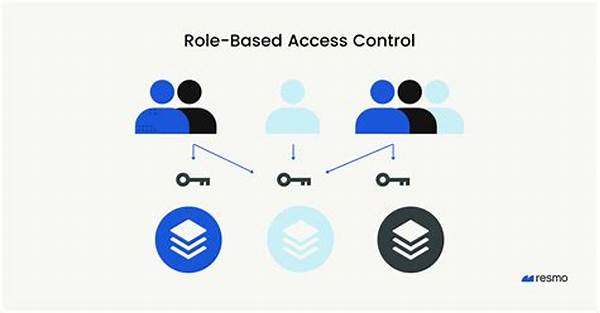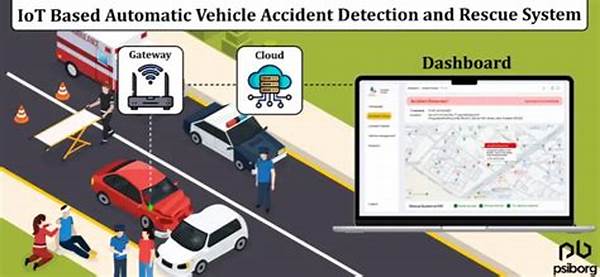“role-based Access Control”
In an era where data security and privacy have become paramount concerns, the implementation of robust access management strategies is vital. Role-based access control (RBAC) emerges as a widely adopted mechanism designed to limit access to vital resources. By assignment of user permissions aligned with their roles within an organization, RBAC effectively streamlines security management, ensuring that individuals can only access and interact with the information necessary for their specific functions.
Read Now : Impact Resistance Of Cybertruck Panels
Understanding Role-Based Access Control
In essence, role-based access control operates like a gatekeeper. Rather than individually assigning permissions to each user, you define roles. Then, assign users to those roles. It’s like having a VIP list for a party, and only those on the list can waltz right in. This nifty system reduces the chaos when it comes to managing who gets to see what and who gets to do what within a system. With role-based access control, you’re essentially saying, “If you’re not on the list, you’re not coming in.” It keeps data safer by making sure that only the right peeps get into the right places, cutting down on potential oopsies where someone stumbles into something they really shouldn’t be poking around in.
Key Concepts of Role-Based Access Control
1. Role Assignment: Users are assigned roles, not individual permissions. Role-based access control makes it simpler to manage access.
2. Permissions on Lock: Every role bundles specific permissions, so you don’t have to handpick what everyone gets to do. Role-based access control keeps it tidy.
3. User Role Map: You match users to roles based on their gig. With role-based access control, tailoring access is practical.
4. Security on Fleek: It’s like giving your security profile a glow-up. Role-based access control makes your data less likely to end up where it shouldn’t.
5. Flexibility & Scale: Got a big team? No worries, role-based access control scales with you. Roles make growth easy-peasy.
How Role-Based Access Control Works
Imagine you’re chilling in a massive virtual club, and there’s a bouncer with a list. This list, dear friend, is role-based access control. Only those on the list get the golden ticket to do certain things or access restricted areas. You’re all set if you’ve got the role. Role-based access control is like the ultimate bouncer, keeping your data’s party exclusive to the right folks. By aligning permissions with roles, not users, it’s less of a hassle managing who gets into what. It’s kinda like getting a backstage pass, but only if you’re crew. Less drama, more control, and everyone’s happy.
The Benefits of Role-Based Access Control
1. Simple Admin: Less juggling of individual permissions, more time for coffee breaks.
2. Consistent Security: Role-based access control keeps everything tight and consistent.
3. Easier Audits: Tracking who did what is easier with role-based insight.
4. Compliance Made Easy: Governments dig compliance. Role-based access control helps you stay on their good side.
Read Now : Toyota Bz5x Driver Assistance
5. Reduced Errors: Fewer chances of saying, “Oops, didn’t mean to open that.”
6. Enhanced Productivity: With role-based access control, people can focus on what they’re supposed to be doing.
7. Scalable Framework: It grows with your business like a dream.
8. Adaptation Game Strong: Quickly swap roles or update access without breaking a sweat.
9. Resource Management: Keeps your resources where they ought to be.
10. Peace of Mind: Knowing you’ve got role-based access control on lock lets you sleep better at night.
Implementing Role-Based Access Control Systems
Grab a pen, ’cause this is how you roll out role-based access control in your turf. First, get to know what everyone’s about—what roles exist in your setup, what’s their business? Once you’ve scoped out all the roles, match ’em up with the right permissions. This process ain’t overnight but chill, it’s worth the hustle. Role-based access control can be the backbone of a smooth-running machine if set right. You’ll cut down on chaos, amp up security, and seriously streamline that access jazz like a boss. Cheers to order in the access kingdom!
Role-Based Access Control: The Future is Now
In this age of digital transformation, the demand for efficient and scalable security frameworks is on the rise, and role-based access control is sitting shot gun. Its scalability and adaptability ensure it stays relevant, matching strides with fast-paced organizational changes. It’s like that timeless jacket—never goes outta style. If you want your organization to swagger effectively through the evolving digital landscape, adopting role-based access control is a legit move. It’s not just about security—it’s about shaping a streamlined, future-ready business environment. Get on board with role-based access control, and you’ll be locking down success.



